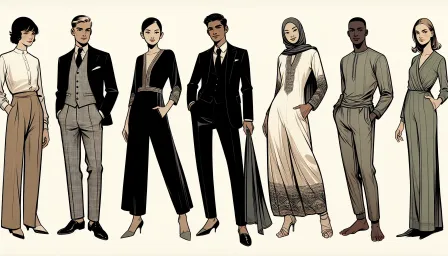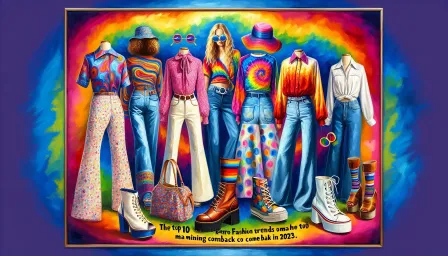The Future of Fashion Industry Technology: Innovations Shaping the Runway

Explore the cutting-edge innovations in fashion industry technology that are shaping the future of the runway. Discover how AI, sustainability, and digital fashion are revolutionizing the industry.
The fashion industry is undergoing a technological revolution. With the advent of digital innovations, the way we design, produce, and consume fashion is being transformed. This article explores how emerging technologies are shaping the future of the fashion industry and what this means for designers, consumers, and the environment.
The Rise of AI in Fashion
Artificial Intelligence (AI) is playing an increasingly crucial role in the fashion industry. From design to customer service, AI is streamlining processes and enhancing creativity.
AI-Driven Design
AI algorithms can analyze vast amounts of data to predict trends and consumer preferences. Designers use these insights to create collections that are more aligned with market demands, reducing the risk of unsold inventory.
Personalized Shopping Experiences
Online retailers employ AI to offer personalized recommendations, improving customer satisfaction and driving sales. Virtual fitting rooms powered by AI enable customers to try on clothes virtually, reducing the need for physical stores.
Sustainable Fashion Technology
Sustainability is a significant concern for the fashion industry. Technology is at the forefront of efforts to make fashion more eco-friendly.
3D Printing
3D printing technology allows for the creation of customized clothing with minimal waste. Designers can print garments on demand, reducing overproduction and the environmental footprint of fashion manufacturing.
Blockchain for Transparency
Blockchain technology provides a transparent and traceable record of a garment's production journey. Consumers can verify the sustainability claims of brands, ensuring ethical practices and reducing the prevalence of fast fashion.
The Emergence of Digital Fashion
Digital fashion is a burgeoning trend that merges fashion with virtual reality (VR) and augmented reality (AR), offering new ways for consumers to interact with fashion.
Virtual Fashion Shows
Virtual fashion shows, accelerated by the COVID-19 pandemic, have become a staple for many brands. Utilizing VR and AR, designers can showcase their collections to a global audience, breaking down geographical barriers.
Wearable Technology
Wearable technology, such as smart fabrics with embedded sensors, is revolutionizing fashion. These innovations offer functionalities like temperature regulation and health monitoring, merging style with practicality.
Challenges and Future Prospects
While technology offers numerous benefits, the fashion industry faces challenges in its adoption.
Data Privacy Concerns
With the rise of AI and data-driven personalization, ensuring the privacy and security of consumer data is paramount. Brands must navigate regulatory requirements and consumer trust issues.
High Initial Costs
Integrating advanced technologies can be expensive. Small and medium-sized enterprises (SMEs) may struggle to afford the initial investment, potentially widening the gap between established brands and newcomers.
Conclusion
The future of fashion industry technology is both exciting and complex. Innovations such as AI, sustainable technologies, and digital fashion are revolutionizing how we experience fashion. As these technologies continue to evolve, they will undoubtedly bring forth new challenges and opportunities. By embracing these changes, the fashion industry can look forward to a more sustainable, efficient, and customer-centric future.



























